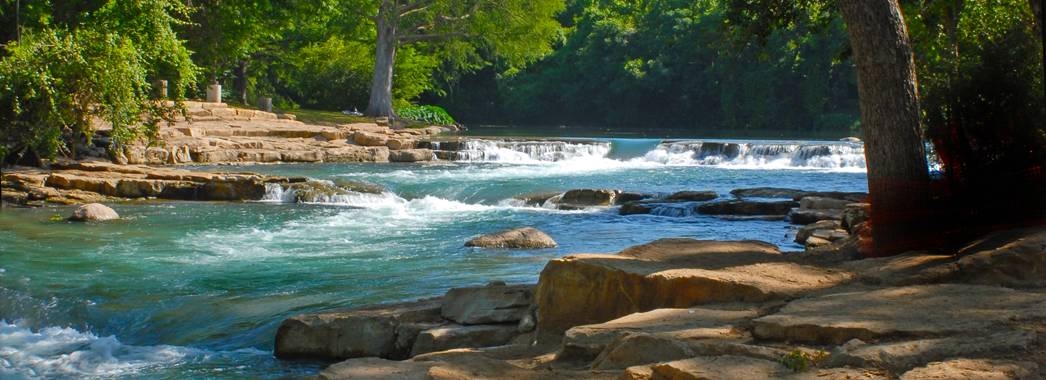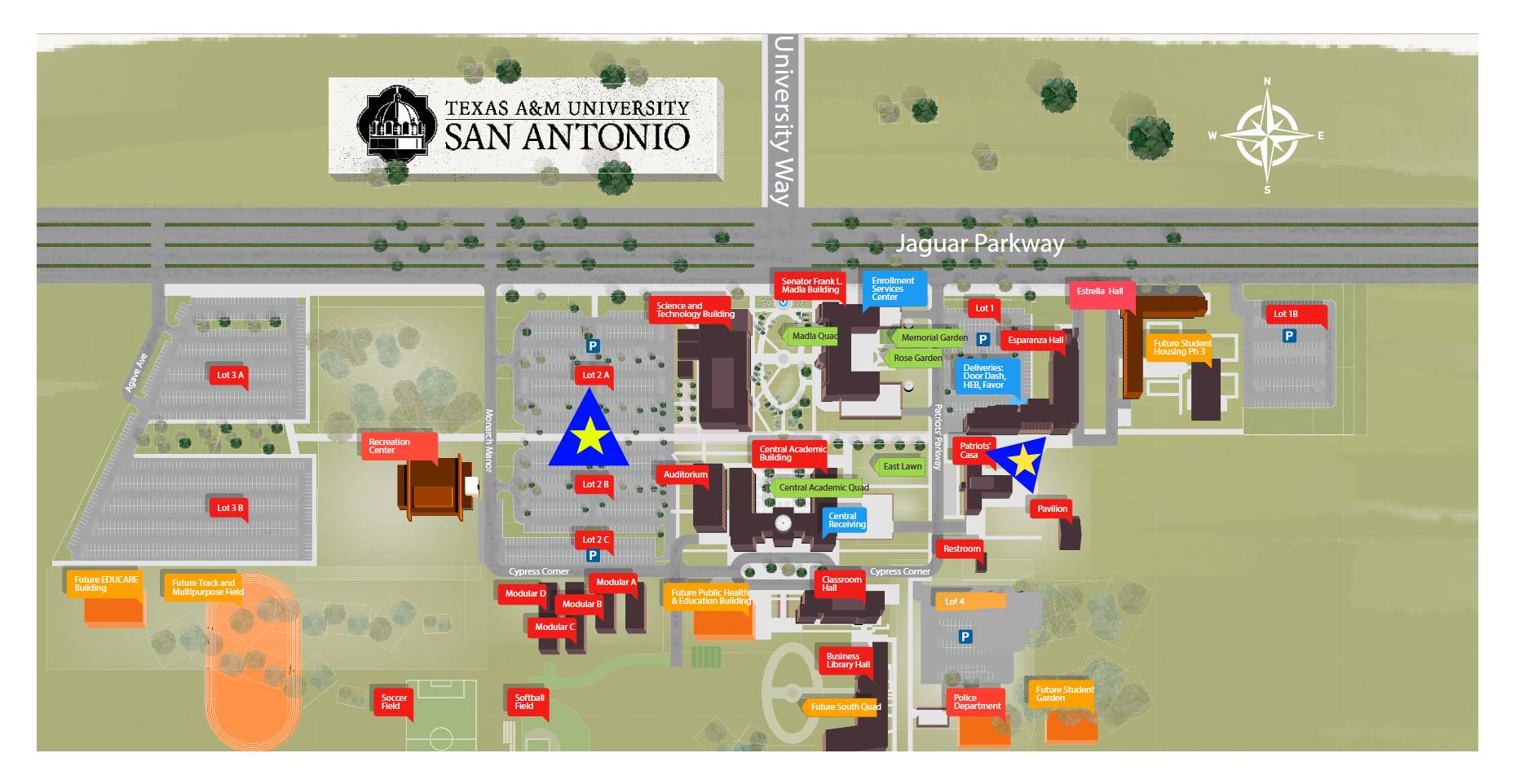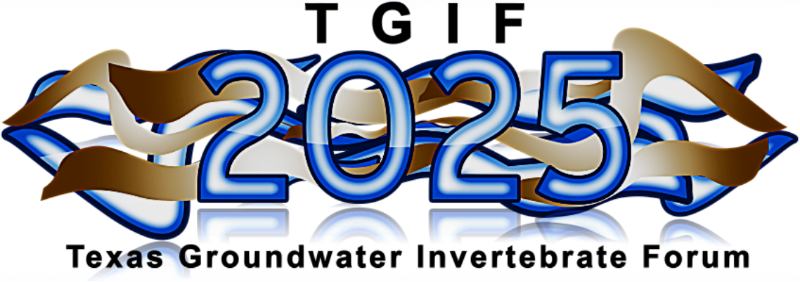

The 2025 Forum was a tremendous success! Our heartfelt thanks go out to everyone who participated and brought energy and excitement to this year’s event. We are grateful to Texas A&M University–San Antonio for their outstanding hospitality as host, and a special thanks to the planning committee for putting together a great program.
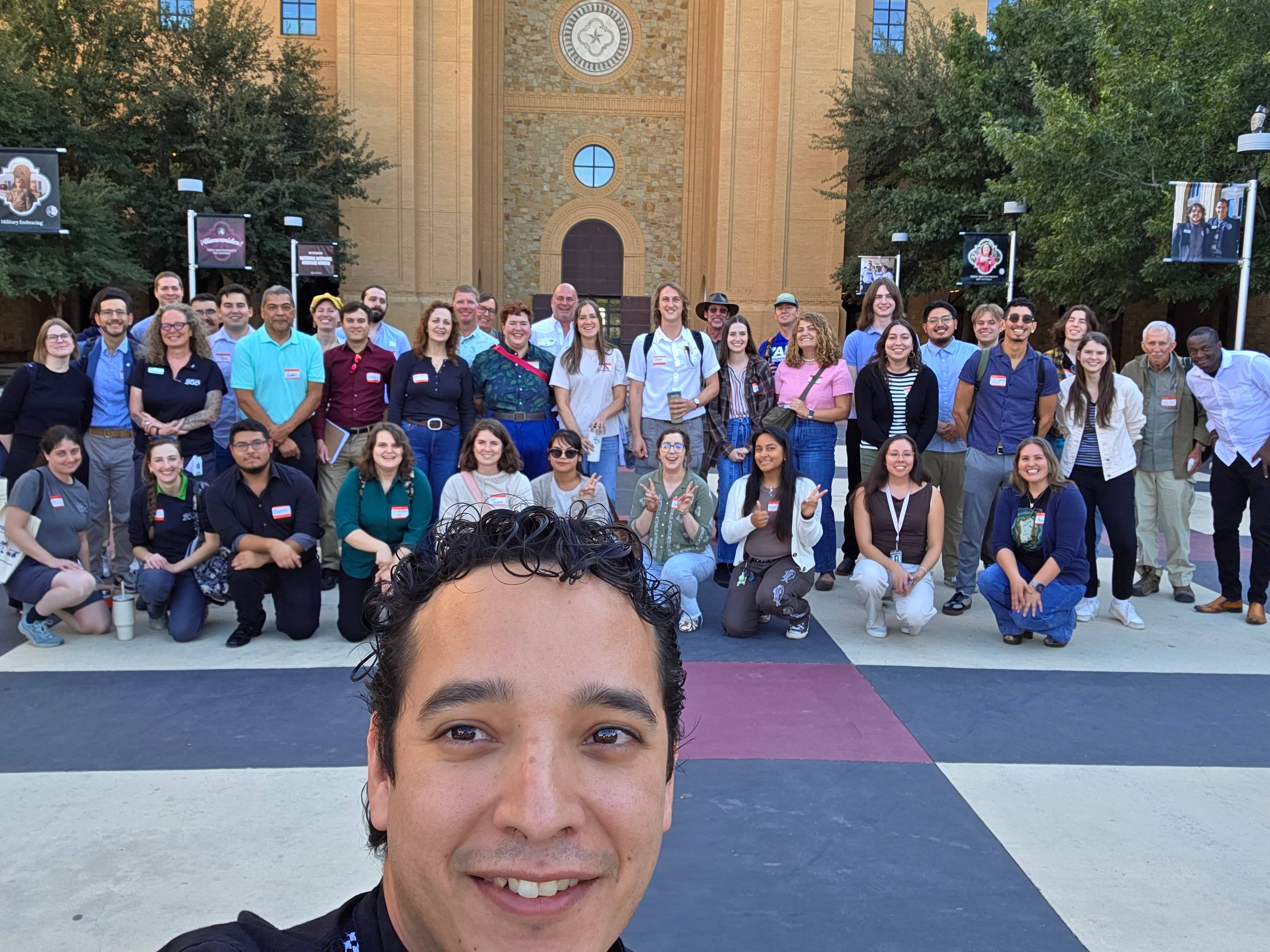
2025 TEXAS GROUNDWATER INVERTEBRATE FORUM PHOTOS
GREAT TALKS-POSTERS WITH AN AWESOME GROUP OF ATTENDEES!! CAN'T WAIT TO SEE WHAT TGIF 2026 BRINGS!!
2025 TEXAS GROUNDWATER INVERTEBRATE FORUM PROGRAM
PRESENTATIONS
- Okan Külköylüoğlu, Ostracod diversity, disturbance, and conservation of springs and groundwater habitats in the Great Basin and Texas
- Cecilia Fitzgerald-Cook, Detecting environmental DNA (eDNA) of a keystone crustacean in threatened Hawaiian wetlands
- Tyler Morgan, Gene flow at the microscale in three endangered animals
- Muntadher Mashan, Using genomic tools to enhance biodiversity assessments in karst subterranean estuaries
- Gabrielle Vaughn, Population genetics and distribution of Typhlatya species
- Joseph Aubert, Insect diversity in the Hyporheic Zone of Texas rivers
- Ramon Villarreal, Investigation of 2 potential new species of Cirolanides, a crustacean (Isopoda) found in the Edwards Aquifer
- Andrew Cannizzaro, Light shining into the darkness: phylogenetic analyses of a hypogean crustacean (Amphipoda: Parabogidiella) reveals unique diversity and structuring
- Katherine Bell, Conservation genetics of Stygobromus in Texas
- Ruben Tovar, Exploring the utility of diceCT in karst and aquifer taxa
- Ben Hutchins, The Aquifer Biodiversity Collection at the Edwards Aquifer Research & Data Center
POSTERS
- Evan Guerrero, Influence of the hyporheic zone on gene flow in invertebrates in the Edwards-Trinity Aquifer, Texas
- Danielle Bragg, Spatiotemporal analysis of metazoan community from the subterranean estuaries of the Yucatan peninsula and Cozumel island through metagenomics
- Erika Frandsen, Relationships between benthic and hyporheic insect communities across environmental gradients in Texas rivers
- Connor Grizzle, Marco Rodriguez, Toward Speleogenomic Pipelines: Characterizing Biodiversity from Species to Communities
- Kamryn Richard, Work with Ozark Cave Fauna
- Lukas Perez, A second uncoiled phreatic snail (Gastropoda: Cochliopidae) from the Edwards-Trinity aquifer
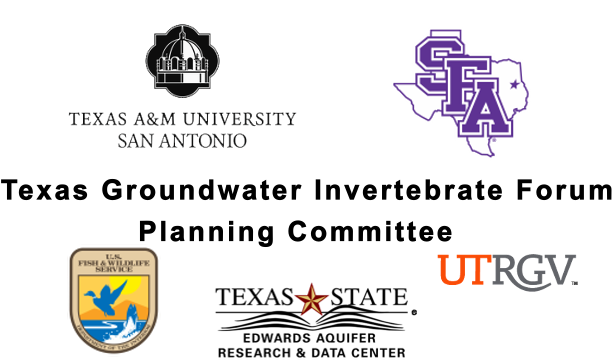
| Elizabeth Borda - Texas A&M University San Antonio |
| Fernando Calderon-Gutierrez - Stephen F. Austin State University |
| Kathryn Perez - University of Texas at Rio Grande Valley |
| Amelia Hunter - USFWS - Southwest Regional Office |
| Randy Gibson - USFWS– San Marcos Aquatic Resources Center |
| Benjamin Hutchins - Edwards Aquifer Research & Data Center |
| Victor Castillo III - Edwards Aquifer Research & Data Center |
Interactive Map for Directions--Click Directions Tab Below
GOAL
To bring together people who are working on subterranean biology so that knowledge and information can be shared and transferred and future efforts to increase knowledge of groundwater ecosystems can be coordinated.
MISSION STATEMENT
The mission of the organizers of TGIF is to encourage collaboration and exchange of ideas and information, and to more efficiently and clearly convey and transfer information to those who need and/or use it.
PROBLEM STATEMENT
A number of people are currently working on Texas groundwater organisms, however, there is infrequent research coordination and information exchange about the diverse projects and ongoing efforts that can cause barriers for those who want to fully understand groundwater biodiversity, promote efficient dissemination, and effectively use the data for research and management purposes.
